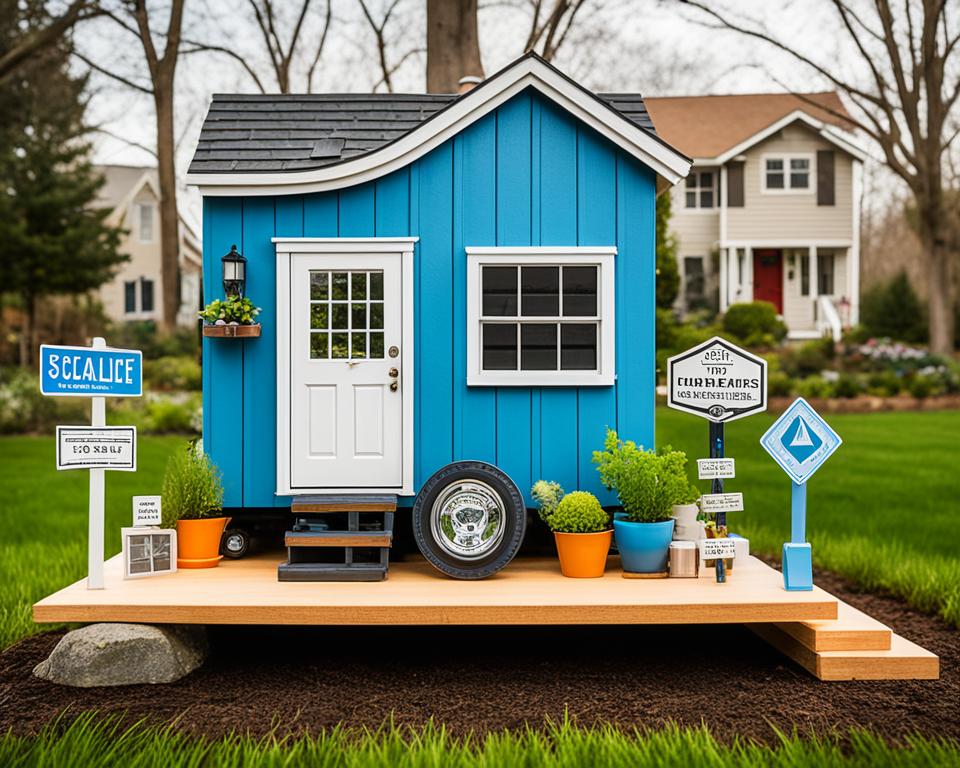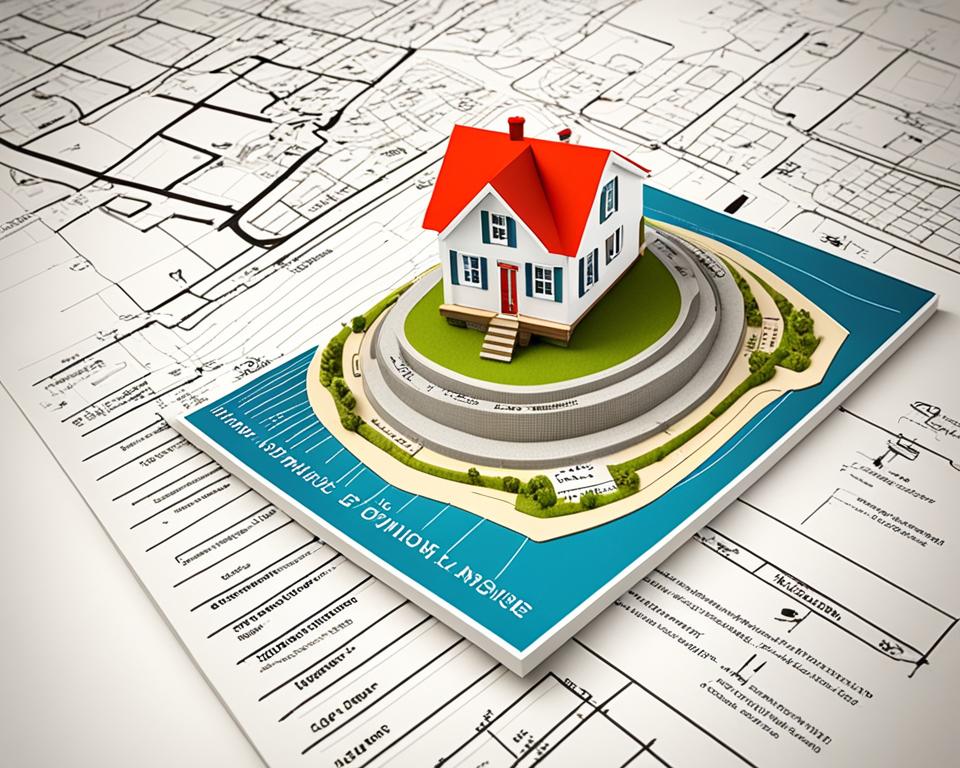Tiny houses are now 67% more popular in the U.S. than they were four years ago. This big jump shows more people want to live simply and sustainably. But, there’s a catch: zoning laws for tiny houses can be tricky and vary a lot depending on where you live. If you’re in Illinois and thinking of building a tiny house on your land, it’s key to understand the local zoning laws first. This is essential to build your tiny dream home without breaking any rules.
Living small in Illinois means getting familiar with local land zoning for tiny houses. This step is critical and can be a bit confusing. It differs from one county to another. Whether you’re looking at a spot in Livingston County or near Cook County, you’ll need to understand these laws. They cover many things, like how big your tiny house can be or if tiny homes on wheels (THOWs) are allowed. We’re here to help you figure this out.
So, before you jump into tiny house living, let’s look closely at what needs to be done. We’ll explore the zoning rules to make sure your land is ready for a tiny house. This will help ensure your tiny home dream meets all legal standards for sustainability and compliance.
The Legal Landscape for Tiny Homes in Illinois
Illinois has a mixed approach to tiny houses, with rules varying greatly across the state. Some areas offer a warm welcome, while others keep tight restrictions. Whether it’s tiny homes on foundation or tiny houses on wheels, each place has its own set of rules.
In Livingston County, the vibe is positive for tiny houses thanks to their focus on sustainability. Here, laws are more lenient. But in big cities like Chicago, things get tougher with many restrictions on where tiny houses can go.
The rules differ mainly because of how tiny houses are classified. For example, tiny houses on wheels are often seen as RVs. This means they follow RV park rules. On the flip side, tiny homes on foundation must meet building codes for permanent houses.
Here’s a simple guide to what Illinois asks for from tiny homes:
| Category | Foundation Homes | Homes on Wheels |
|---|---|---|
| Zoning | Subject to residential codes, with some counties requiring minimum square footage | Often classified as RVs, must comply with RV park regulations |
| Building Standards | Must adhere to the International Residential Code (IRC) or local building codes | Typically governed by National Highway Traffic Safety Administration (NHTSA) standards |
| Utilities | Connection to city services or approved septic systems required | May use off-grid options but should comply with health department regulations |
| Legal Advice | Recommended to consult with a land use attorney for navigating zoning and building codes | |
Working with a land use attorney can make a big difference when it comes to tiny homes. Whether you want a house that stays put or one that moves, knowing the local codes is essential. This way, you won’t run into legal problems later.
Choosing the right type of tiny home for you comes down to understanding local laws. We’re seeing tiny houses evolve in Illinois. So, it’s smart to stay updated on laws and codes. This helps make sure your tiny home project follows the legal path.
Understanding Tiny House Zoning Regulations

Thinking about living tiny? It’s key to know land zoning for tiny houses varies. Before starting, get to know the zoning laws. Discover how rules differ by county and impact your tiny house plans.
Location matters a lot in tiny house living. We will look at how local rules shape your ability to build and live in a tiny house.
Exploring Varying Policies across Counties
First, we check the rules in Illinois counties for tiny home zoning. Some counties say yes, others no. It’s crucial to understand each county’s rules, from accepting tiny homes to demanding bigger sizes.
Examining the Role of Local Zoning Regulations
Zoning rules are key for building tiny homes. They cover location, design, size, and utilities. These rules also decide if tiny homes need foundations or can stay on wheels.
Navigating Location-Specific Tiny House Rules
In Illinois, you must look beyond state rules to specific local regulations. These details define if you can live in your tiny house dream. Talking with local zoning offices is a must.
This overview shows the need to understand county and local zoning for tiny homes. Learning about zoning can help you make smart choices for your tiny home dream.
Preparing for Tiny House Living: Legal Requirements Investigated

For those dreaming of tiny house living, learning about tiny house zoning guidelines is crucial. In Illinois, the regulations can greatly affect your tiny house goals.
Focusing on building codes for tiny house living is important. These codes cover not just building standards but also the unique designs of tiny houses. Getting approval involves following the International Building Code (IBC) or the International Residential Code (IRC). This is key for tiny house land use permissions. Deciding if your house will be stationary or on wheels affects what rules you follow.
- Foundation-based tiny homes: You must first get permits. Your design should meet safety and height standards and pass inspections.
- Tiny Houses on Wheels (THOWs): There are rules for parking a THOW to live in full-time. Check if your THOW can stay on a piece of land long-term or only in places like RV parks.
In Illinois, tiny homes must be at least 150 square feet. This rule ensures living spaces aren’t too cramped. Success in tiny living means doing your homework and planning carefully. You must follow all tiny house zoning guidelines and building codes for tiny house living closely.
Whether it’s your first tiny house or you’re improving an existing one, understanding tiny house land use permissions is essential. This knowledge leads to a legal, worry-free tiny house life. It also prepares us for a life of simplicity and sustainability within the law.
How to Find Out if My Land is Zoned for Tiny House Living
Starting your tiny house journey begins with checking local zoning laws. This is key for tiny home dreamers. Before imagining your small oasis, it’s important to ensure your land is compatible. Let us help you figure out if your land is zoned for tiny house living. We’ll provide the necessary steps for this crucial part of your plan.
Conducting a Thorough Zoning Check
It’s vital to check your land’s zoning for tiny houses. First, look into the zoning laws that apply to your area. This is your starting point to see if your land meets the rules. It involves checking if your land fits criteria like size and dwelling types. This is true whether your tiny home will have a foundation or wheels. Doing a full check gives you a clear picture of the zoning situation.
Engaging with Local Zoning Authorities
While the internet is a good place to start, talking to local zoning offices is best. They can offer more accurate and detailed information. Connecting with these offices helps you understand current and future zoning rules. We recommend building a good relationship with them. This way, you’re well-informed about any zoning changes affecting your tiny house.
Utilizing Online Resources for Zoning Information
Online resources are great for initial zoning research. You can find zoning maps and documents provided by local governments. However, this information should only be a starting point. Always check these details with local zoning experts. Working with them ensures your tiny house plans follow the law.

